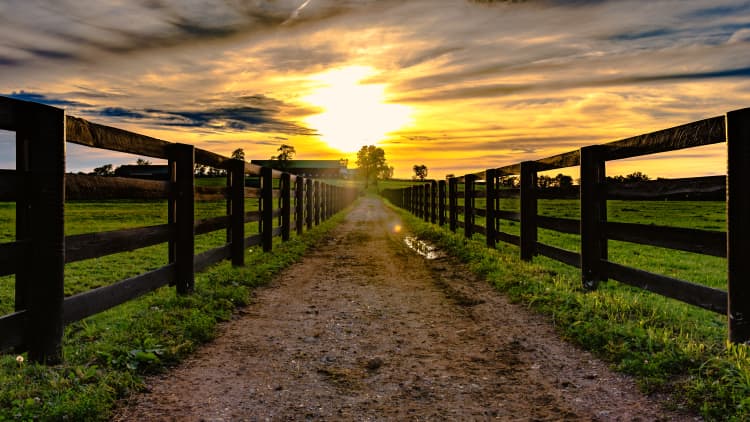Farm Belt states are great for business. The "I" states — Iowa, Illinois, Indiana — along with Nebraska, Kansas, Minnesota, Missouri, California, Texas and others, are powerhouse food producers. U.S. agriculture typically harvests enough for our own consumption and about 20% more for export.
But the farm economy — never a sure thing — is challenged this year like at no other time in recent history, at least since the mid-1980s. Ironically, the problem this time is agriculture's amazing productivity in the U.S. and other developed nations. Five straight years of bumper crops have resulted in excess supply, depressing commodity prices and eroding the savings and equity on the balance books.
Add to this extreme weather this spring that has produced massive flooding and significantly delayed most planting, which will mean lower yields this fall. Eventually, this may raise commodity prices, but in the short term it creates a "double whammy": less to sell at lower prices, resulting in drastically reduced income. Which states are hurt most depends on variables particular to each state. California is impacted most by lack of labor, while Wisconsin suffers worst from bankruptcies and dairy losses, for instance. As the largest soybeans-producing states, Iowa and Illinois invariably are hit hardest on multiple fronts by adverse weather patterns and prolonged trade disputes.

Then there are the ongoing trade issues and tariffs with China, Mexico, Canada and Japan, our top trading partners. Farmers should get some relief from the June 30 cease-fire between the U.S. and China that has stopped additional tariffs on Chinese goods indefinitely. But trade is still a concern.
Another complication: China's pork producers are suffering from an outbreak of African Swine Fever that may cut their production in half. U.S. farmers export soybeans to China as feed, but with significantly lower pork production, China won't need as much.
Finally, there are critical shortages of farm labor due to Washington's inability to deal with basic immigration reform. Put it all together and farmers are facing a "perfect storm" that is driving many to financial disaster even with federal aid.
Family farms weather the perfect storm
About 98% of U.S. farms are family owned, so these matters hit home. Net farm income has fallen 50% since 2013, from $140 billion to $70 billion. Working capital has decreased about 75% since 2012, from $165 billion to $38 billion. Farm debt has steadily increased about 30% since the early 1990s now more than $400 billion. Farm bankruptcies are up, as are Chapter 12 filings.
Weather is beyond our control. But our trade and immigration policies are not. What farmers want most is trade, not aid. Trade uncertainties — whether driven by disputes on tariffs, as we are seeing now, or from unpredictable approvals of genetically modified crops in certain foreign countries — affect planting as well as grain marketing decisions. Fair and open global trade in agriculture can't come soon enough for U.S. farmers, ranchers and agribusinesses.
Ditto immigration reform. The lack of an adequate agricultural labor force has dramatically impacted farmers. There are not enough workers to pick fruits and vegetables, or help milk cows, or keep the livestock packing plant lines running efficiently.
More from America's Top States For Business:
Wyoming may hold the key to the rare earth mineral trade war with China
Ohio has highest opioid overdose rates in the US. Now it's rushing to stop the death blow to its economy
Why Pennsylvania is offering a child savings plan for every baby born in the state
In the crosshairs of public policy
Most farmers and ranchers have been supportive of the president's trade policies, especially with China. But there can be long-term ramifications from the most recent trade disputes. Faced with steeply higher prices, importing countries often seek other sources of supply. That can cost U.S. farmers important markets developed over decades. Chinese buyers looking to Brazil and Argentina for soybean supplies — causing an 85% year-on-year drop in U.S. farmers' soy exports to China as of March 2019 — is case in point and hopefully reversible before it's too late. Trade policy veterans know well: the hardest market to get is the one you had and lost.
On immigration, farmers see themselves as collateral damage to the incessant partisan feuding and deadlock in Congress, where some seem to care more about scoring political points than actually solving problems and looking out for the interests of America's key industries.
Farming has always been tough, but most farmers are resilient. For the rest of us, it's important to have an appreciation of what it takes for America's 2 million farmers to feed the other 330+ million of us. Understand that whether you prefer modern, mainstream farming (about 98%of U.S. acres), or organic (about 2%), or other methods such as hydroponic, U.S. farmers provide the most abundant, safe and affordable food in the world.
Farmers are the original stewards of the environment. They rely on healthy soil, clean water and ample biodiversity. And they have every incentive to improve the sustainability of their land and business — for their livelihood and our food supply — this season and every one that follows.





